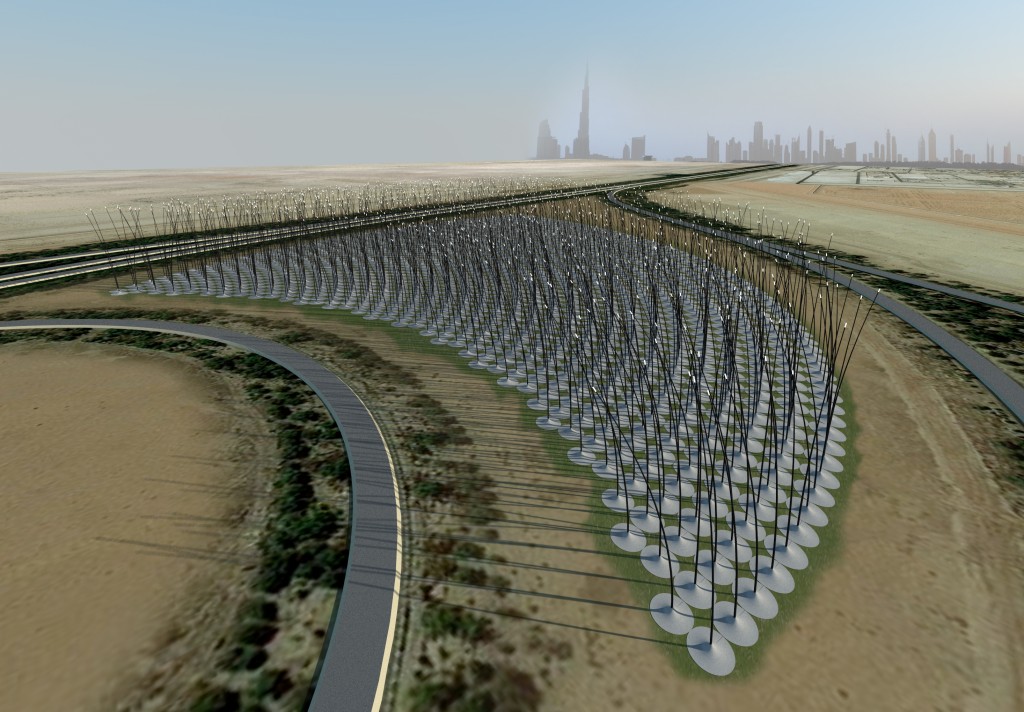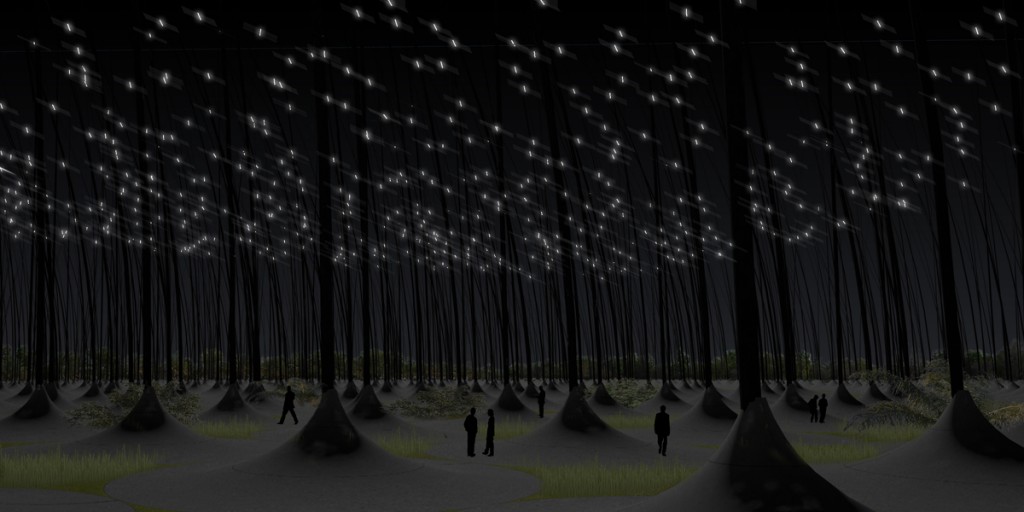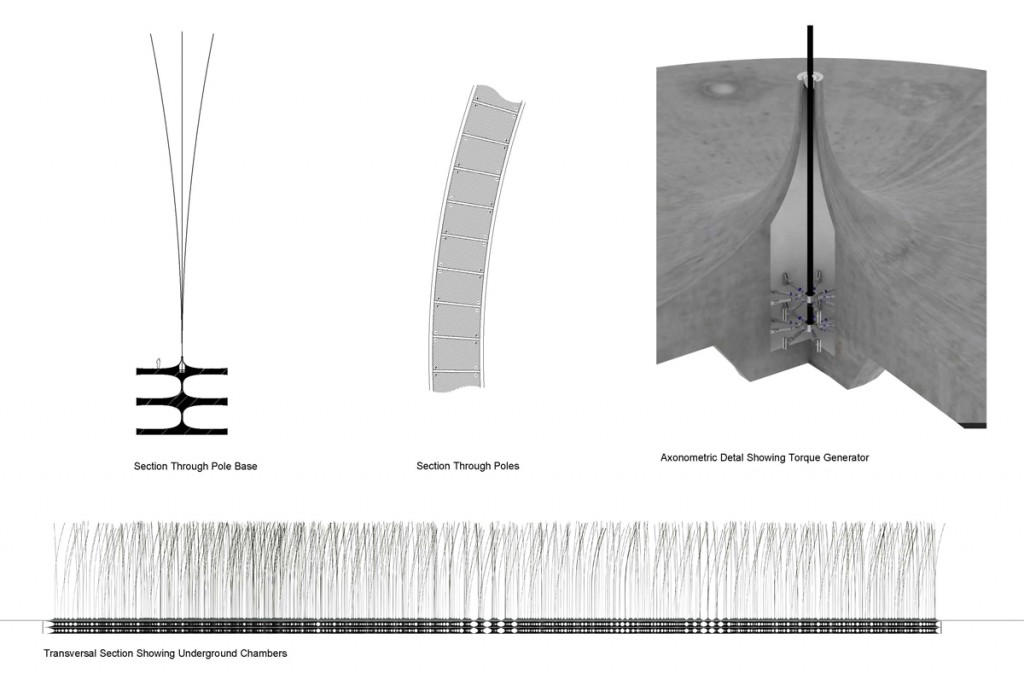For all the positives of wind energy, there are certainly drawbacks, including the fact that the commonly used massive propellers require a considerable amount of land and are known to kill bats and birds. New York-based design lab Atelier DNA has conceived a new idea for wind energy that eliminates some of the common problems of more conventional propeller systems. The company's goal was to create both an energy-generating solution and an artwork.

Inspired by the swaying of wild reeds and fields of wheat, their design consists of 1203 "stalks" that sway in the wind to generate energy. The stalks, which are made of carbon-fiber-reinforced resin, measure 55 meters long and are mounted in concrete bases of 10 to 20 meters. Both practical and beautiful, each stalk is tapered and carries an LED at the tip that glows and dims, depending on how strong the wind is blowing.

So, how exactly would this work? The company's site explains it this way:
Within each concrete base is a hollow chamber that houses a torque generator. The generator converts the kinetic energy of the swaying poles into electrical energy by way of an array of current generating shock absorbers, which convert energy produced by the forced movement of fluid through the shock absorber cylinders.
When the wind blows, part of the electricity generated powers a set of pumps, the pumps move water from the lower chamber to the upper one. When the air is still [...] the water from the upper chamber flows down again turning the pumps into generators.

At this stage, the project is purely conceptual, but the company points out that it is based on existing and viable technology. You can learn more about the project and see more images here. This wind energy sculpture was created as an entry in the Land Art Generator competition.



Comments
If it works and has no draw backs later in the future, it's good to look for some new changes.
I agree. I'm also pleased to see a proposed idea that's practical and also very attractive. (Although I actually kind of like the look of conventional propellers too.)
I love the graphics in this post.
Would be good for gusty wind but not so good for steady sustained winds Floyd F
Why not tap into the swaying of trees to extract energy. A system of cables and pulleys could tap int the energy of several swaying trees and the foliage would add to the power extracted.
That's a very interesting idea, Floyd--thanks for your comment. As for the comment about gusty vs. steady, this was a site-specific design, so not sure what the wind conditions are (hopefully they're compatible).